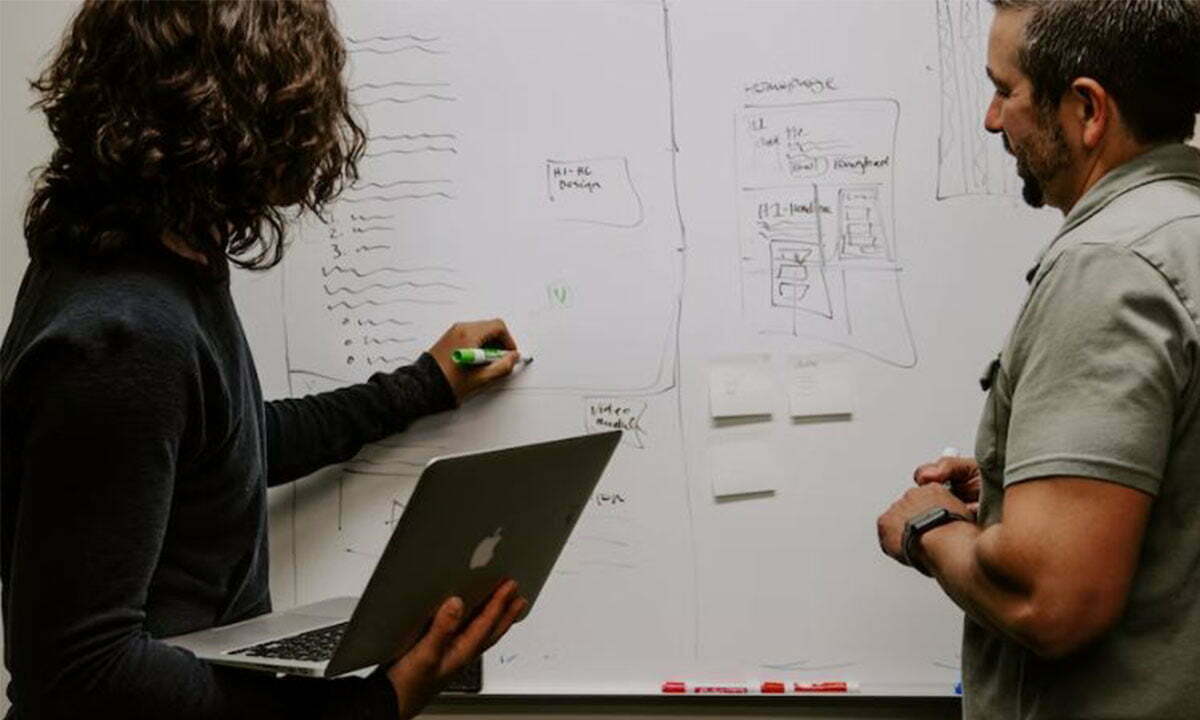In business, the desire to make a positive impact is just as important as thinking about how to achieve your goals. Having a long-term vision and effective, well-structured planning is essential for getting ideas off the ground – and certain tools can help establish these goals and deadlines, such as the Theory of Change.
What is The Theory Of Change?
In summary, the Theory of Change is a set of tools that can help to plan any type of social initiative, such as a project or a business, by defining and explaining its long-term objectives.
It also serves to identify smaller goals to be achieved along the way, so that overall objectives may be achieved.
The Theory of Change is especially attractive for collaborative projects, which involve multiple sectors. Its tools allow decisions about changes to be organized collectively, by offering an overview of the project’s evolution – especially if you create a flowchart.
This theory first defines the impact that the company wants to have as a well-defined objective, before developing the necessary steps to reach the goal in question.
The tool maps the logical sequence of activities, resources, objectives, results, and expected impacts, always bearing in mind the long-term vision. In practice, the Theory of Change offers greater clarity on what needs to be put into practice to achieve greater goals in the future. The American scholar of education and policy analysis, Carol Weiss popularized the term ‘Theory of Change’ in 1995 as a way of describing the set of assumptions or theories that explain all the steps leading to the achievement of a long-term goal, the connections between program activities and the results that occur at each step of the way.
How Is The Theory Of Change Implemented?
First, involve all of the project stakeholders and keep in mind that the process should be carried out as collaboratively and collectively as possible since everyone will work together to achieve the stipulated goals – including professionals, managers, investors, and advisors.
Even though it takes time, it pays to spend a day engaging all stakeholders to bring their visions and ideas to the project. These are the people most invested in seeing these goals achieved.
If your business is still at an early stage, and potential investors and partners are not yet in contact with the project, it is worth making an effort to bring them closer to the action.
Know the problem which you want to solve
Elaborating the Theory of Change relies on the people involved in the process having broad and in-depth knowledge, not only of the solution – the project or business which they are developing – but also of the problem they’re seeking to solve.
Conduct research, and talk to people who have direct contact with the problem before sitting down to develop your Theory of Change.
At this stage, make sure to specify and organize:
- The causes and consequences of the central problem;
- The deeper and more complex roots of the problem which you are trying to solve;
- As many associated causes and consequences as possible, initially in the form of a brainstorm.
Set long-term goals and learn how to assess them
One of the most important steps in the construction of the Theory of Change – if not the most important – is the definition of long-term goals. But how to go about doing this?
If you have completed the previous step, setting goals will simply be a matter of adapting the language and reaffirming your commitment to the problem.
At this stage – as throughout the construction of the Theory of Change – it is important to pay attention to the measurement of results using impact indicators. These definitions must be stipulated from the beginning, as this will facilitate the evaluation of the program or the evolution of the business throughout its implementation.
The improvement proposed with the tool needs to be explained in an objective and measurable way, so the scope of the change we intend to make can be understood.
Ideally, this step will quantitatively indicate the size of the problem we are facing and, consequently, the impact generated by the solution we are aiming to deliver.
Create the structure of the Theory of Change
Finally, build your Theory of Change structure. Now is the time to specify what will actually be done, which activities will be carried out and in what way, and what possible results.
Set short-term goals, and determine which actions should be taken, which strategies will be used, which employees will be involved, and which deadlines will be set. Don’t forget to design all activities according to the objectives stipulated in the long-term goals stage.
Doing this guarantees the effectiveness of real change, which will define the entire process. Keeping the focus on the result, the other stages of the enterprise are forwarded in its direction, ensuring that long-term results are achieved.
Why do I need the Theory of Change?
The benefits of using the Theory of Change go far beyond helping to measure impact, although this is a major strong point of this methodology. The advantages of applying it in building your business model include:
- Developing a more robust planning of activities to be performed;
- Providing an objective view of the tasks required to achieve the desired results;
- Preventing you and your team from wasting time and resources on unimportant tasks;
- Facilitating the process of tracking and monitoring your business’ evolution.
Some other benefits that this tool can bring include:
Strategy: the Theory of Change helps teams work together to reach a common understanding of a project and its goals, as well as revealing different views and assumptions about what an organization wants and how the team should work together.
Communication: the Theory of Change offers an interesting way to summarize your work and communicate it to stakeholders, including funders and commissioners.
Change process: all changes occur incrementally through steps which lead to their overall goal. This type of change encourages you to focus on results and articulate them accordingly.By creating a Theory of Change, you will have the foundation for any mission-oriented business initiative, and the tools you need to work on solving problems.












